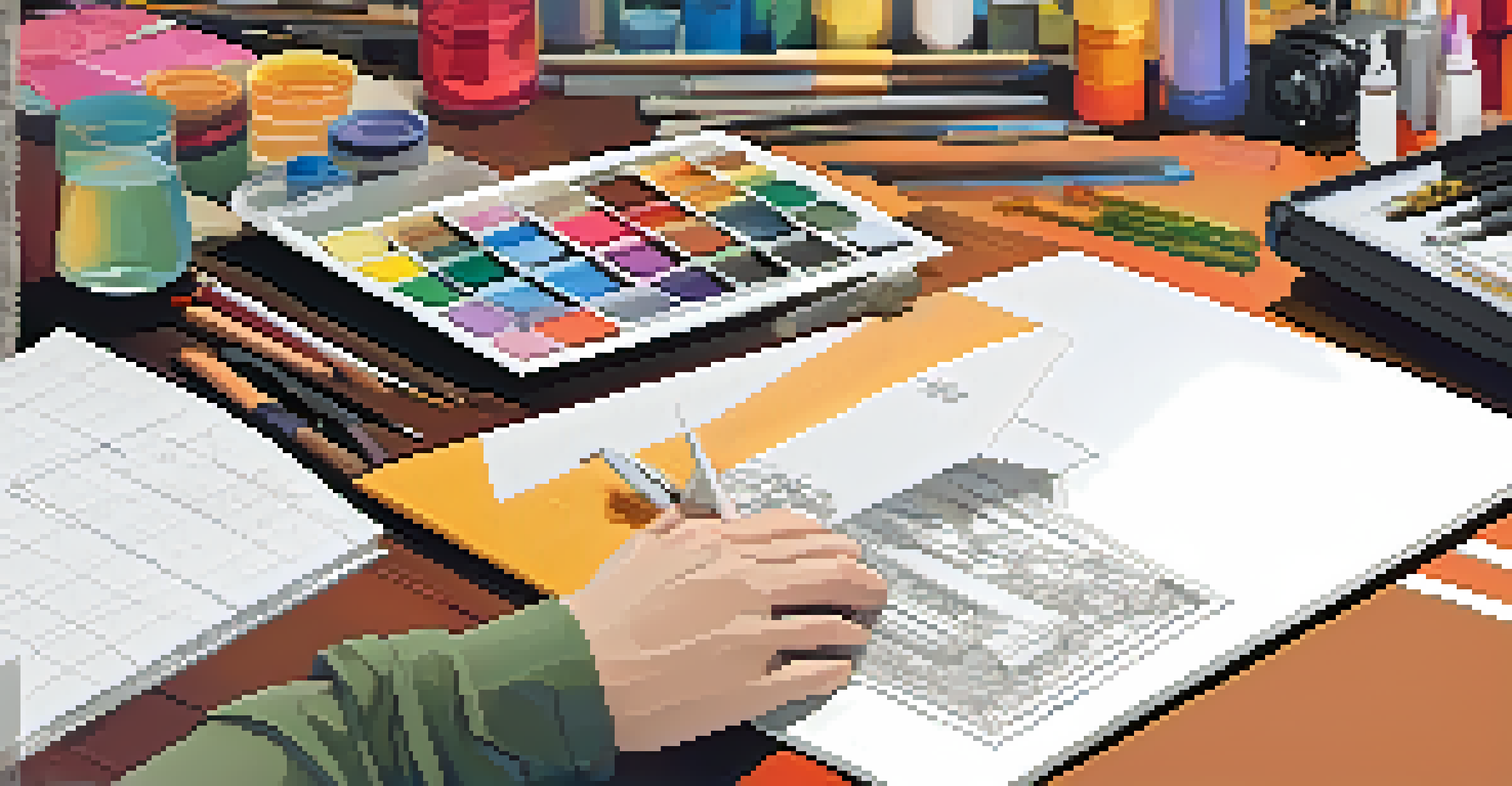Prototyping: Transforming Ideas into Tangible Products

Understanding Prototyping: What It Is and Why It Matters
Prototyping is the process of creating a preliminary model of a product. It allows designers and developers to visualize and test ideas before committing to full-scale production. This step is crucial because it saves time and resources by identifying potential issues early on.
A prototype is worth a thousand meetings.
Think of prototyping as sketching before painting a masterpiece. Just as artists refine their concepts through sketches, product creators use prototypes to explore functionality, design, and user experience. This iterative process fosters creativity and innovation.
In essence, prototyping transforms abstract concepts into something tangible. By bringing ideas to life, it helps teams communicate their vision clearly and aligns everyone involved in the project, making it a vital step in product development.
Different Types of Prototypes: Which One to Choose?
There are several types of prototypes, each serving a specific purpose. Low-fidelity prototypes, such as paper sketches or wireframes, are great for testing concepts quickly and inexpensively. In contrast, high-fidelity prototypes provide a more realistic representation of the final product, often including interactive elements.

Choosing the right prototype depends on the stage of development and the feedback you need. For instance, if you’re in the early brainstorming phase, a low-fidelity prototype can help gauge initial reactions without overwhelming details. Meanwhile, a high-fidelity prototype is ideal when you’re ready to test user interactions.
Prototyping Saves Time and Resources
By identifying potential issues early, prototyping helps teams avoid costly mistakes in product development.
Ultimately, the choice of prototype will guide how effectively you can gather insights and make informed decisions. Understanding the strengths and weaknesses of each type ensures you pick the right tool for your project.
The Prototyping Process: Steps to Follow
The prototyping process typically starts with ideation, where teams brainstorm concepts and outline the product's core features. This phase is essential as it sets the foundation for what the prototype will eventually become. Sketching out ideas can lead to unexpected innovations and insights.
The best way to predict the future is to invent it.
Next, teams create the prototype based on these ideas, which may involve building physical models, coding an app, or crafting digital wireframes. During this phase, collaboration is key, as input from various stakeholders can enhance the design and functionality.
Finally, testing the prototype with real users provides invaluable feedback. Observing how users interact with the product helps identify areas for improvement and informs necessary revisions before launching the final product.
Benefits of Prototyping: Why Invest in It?
Investing in prototyping offers numerous benefits, one of which is risk reduction. By identifying potential flaws or misconceptions early in the process, teams can avoid costly mistakes later. This proactive approach leads to more informed decision-making and resource allocation.
Additionally, prototypes foster collaboration among team members. When everyone can see and interact with a tangible representation of the product, it encourages open dialogue and innovative ideas. This collective effort often results in a better final product that meets user needs.
Collaboration Enhances Product Design
Prototyping fosters open dialogue among team members, leading to innovative ideas and a better final product.
Moreover, prototyping enhances user satisfaction. By involving users in the testing process, companies can create products that genuinely resonate with their target audience. This alignment with user expectations ultimately leads to increased success in the market.
Tools and Technologies for Effective Prototyping
There are numerous tools available for prototyping, ranging from simple to sophisticated. Software like Sketch and Adobe XD allows designers to create digital wireframes and high-fidelity prototypes quickly. For physical products, materials like cardboard or 3D printing can be used to build models that mimic the final design.
Using the right tool can significantly streamline the prototyping process. For instance, online collaboration platforms enable teams to work together in real time, regardless of their location. This flexibility is invaluable, especially in today's remote working environment.
Ultimately, the choice of tools should align with the project's specific needs and goals. By leveraging the right technologies, teams can enhance their efficiency and creativity during the prototyping phase.
Common Challenges in Prototyping and How to Overcome Them
Despite its many benefits, prototyping does come with challenges. One common issue is scope creep, where additional features are continuously added during the prototyping phase, leading to delays and confusion. To combat this, it's essential to define a clear project scope and stick to it throughout the process.
Another challenge is maintaining effective communication among team members. Misunderstandings can arise when everyone isn’t on the same page regarding the prototype’s goals and intended audience. Regular check-ins and updates can help keep everyone aligned and focused.
User Feedback Drives Success
Involving users in the testing process ensures that products resonate with their target audience, increasing market success.
Lastly, gathering and interpreting user feedback can be daunting. It’s crucial to ask the right questions and observe user interactions carefully. Analyzing this feedback systematically can reveal insights that drive meaningful improvements in the final product.
Case Studies: Successful Prototyping in Action
Many successful companies attribute their achievements to effective prototyping. For example, Airbnb started with a simple prototype of their platform, allowing them to test their concept with users before scaling up. This approach helped them refine their offering based on actual user feedback, leading to their eventual success.
Another great example is the development of the Apple iPhone. Apple used various prototypes to explore different designs and features, ensuring that the final product would resonate with consumers. This meticulous prototyping process played a significant role in the iPhone's groundbreaking success.

These case studies highlight how prototyping can transform ideas into successful products. By learning from these examples, other businesses can adopt similar strategies to enhance their own product development processes.